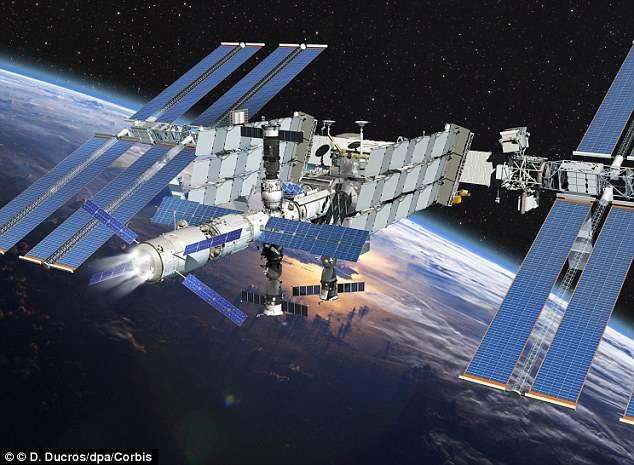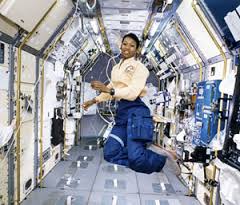

Let’s talk about what it would be like to live on the International Space Station (ISS). First off, we need to debunk a common myth: Astronauts on the ISS don’t float because there is no gravity. There IS gravity — it just doesn’t really affect those in the ISS. Confusing? Let me explain…
Ultimately, objects that are in orbit around another body don’t maintain their position because there is no gravity; they maintain their orbit because of speed (as in velocity… not the drug).
For example, objects in low-Earth orbit (like the ISS) have to travel at least 17,500 mph (28,000 km/h) to keep from plummeting to the planet. At this speed, an object is moving so fast that, as it falls towards the Earth, the planet curves away beneath it. It is a never ending game of cat and mouse — the ISS falls towards the planet and the planet curves away beneath the ISS.
Thus, the ISS remains in a constant state of freefall and the Earth never gets any closer.
And we all know what happens to objects in a state of free fall — they float. Spending your days floating about the ISS as the Earth falls away beneath you… it sounds like complete and utter bliss, doesn’t it? You can sleep on the ceiling, have breakfast on the floor, and play a game of cards on one of the walls. And here, everyone’s an acrobat (or a gymnast… which ever you prefer). Never been able to land that Butterfly Twist? Don’t blame yourself; it’s this pesky Earth with all its gravity that is the problem.
Head to the ISS; then you’ll be golden.

However, it wouldn’t be all fun and games. For starters, the ISS is a terrible place to live for anyone who is claustrophobic. Although the station has about as much habitable space as a conventional three-bedroom house (15,000 cubic feet or 425 cubic meters), you can leave a three-bedroom house to go for a nice evening stroll. You can’t really step outside for a brisk and refreshing walk when you live on the International Space Station (well, you can, but you’ll die, or assuming you have a spacesuit on, you’ll just float there kind of awkwardly).
And then there is the whole “body decaying” thing. The ISS might not be the best place for anyone who hates working out. Since you are weightless, your muscles are not getting the exercise the need to keep you beefed up. And as we all know, when it comes to muscles, if you don’t use it, you lose it.
What does this mean? You’ll have to spend at least two hours every day working out in order to prevent bone and muscle loss, lest you get back to Earth and lose your ability to walk.
Also, there are no refrigerators on the ISS. Salt and pepper are available (yay!) but only in a liquid form (daw). Why the liquid condiments? First, if there were dry condiments (like the salt and pepper), they would simply float away. Try and sprinkle some pepper on your cheeseburger, and it is just as likely to float up and land in your eye. Also, there is a danger that they could clog air vents and contaminate sterilized equipment.

Then there are the bathroom issues. Yes, on the ISS, even using the toilet is an ordeal.
The toilet basically works like a vacuum cleaner. Each astronaut has a personal urinal funnel (just like the salt and pepper, you don’t want your urine floating up and landing in your eye or getting into any sensitive technology on the ISS). You attach your little funnel to a hose, and fans suck air (as well as your urine) through the funnel and into the waste water tank.
Oh, and then you have to drink your own pee.
On the International Space Station, nearly all of the wastewater produced by the crew (sweat, urine, bathwater, etc.) is filtered through a recycling system and converted back into clean water. Naturally, this includes the wastewater that is produced by the rats (so you drink rat pee too). It sounds gross, but we use similar process on Earth, so these systems aren’t exclusive to the ISS.
The Water Recovery System aboard the ISS is quite a feat of engineering — it reclaims almost 93% of the wastewater that is produced by the crew. This system reduces the resources that need to be shuttled from Earth by more than 15,000 pounds (6800 kg) per year. Ultimately, this recycling system allows the ISS to support 6 crew members, instead of the previous 3.

As a final point, since you are weightless you can sleep in any orientation. However, you’ll have to attach yourself to the wall so you don’t float around and bump into things. On the ISS you will sleep in a sleeping bag located in a small crew cabin that is just big enough for one person. But still, for many, all of this inconvenience would be worth it. Since you orbit so fast, you get to see 15 sunrises and sunsets a day… and the views are out of this world.